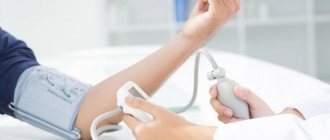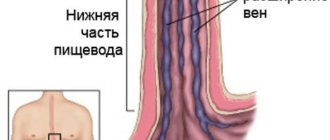What is heart palpitations?
Fading of the heart is a subjective sensation in the patient, which is perceived as a missed next contraction of the myocardium. Most often, this symptom develops in patients with emotional lability, hypochondria and vegetative-vascular pathology, who physically feel the heart rhythm.
The ability to independently sense contractions of the heart muscle also develops in people with long-term persistent cardiac disease. Normally, the myocardium contracts at a frequency of 60 to 90 per minute in the correct rhythm , which originates in the sinus node of the right atrium and is carried along the nerve fibers to the ventricles. The frequency and strength of contractions varies in each person throughout the day, depending on environmental conditions. The appearance of extraordinary impulses (up to 300 per day) is considered a physiological norm, which a healthy person does not feel.
The development of a feeling of cardiac arrest in patients is associated with:
- loss of the next contraction;
- long pause between impulses (against the background of a slow rhythm);
- weakened strength of heart contractions.
Patients describe this condition as “immersion”, “falling out”, “short stop of heart and time”, “sudden weakness”, “heart working intermittently”.
Fall asleep and not wake up. Why do tragedies happen in dreams?
Cardiovascular diseases are the scourge of modern society. In world statistics, this is the most common cause of death. In Russia alone, about two hundred thousand people a year die from sudden cardiac arrest. The most difficult thing to comprehend is the loss if the person felt well the day before, but did not wake up in the morning.
We talked about the causes of the tragedy and ways to prevent it with cardiologist Tatyana Mikhailovna Kolomeytseva.
— Tatyana Mikhailovna, what can cause a person’s heart to suddenly stop?
As a rule, this is a consequence of existing diseases: coronary heart disease, hereditary cardiomyopathies, congenital heart defects and conduction system. The cause is also thrombosis, spasm of the coronary vessels.
In Russia alone, about two hundred thousand people a year die from sudden cardiac arrest.
— Can a tragedy happen to an absolutely healthy person whose cardiovascular system has never failed?
An absolutely healthy person is not at risk of dying from a heart attack. However, heart disease (in particular, coronary artery disease) can be asymptomatic. In this case, the tragedy becomes the result of an undiagnosed pathology.
“Chronic heart failure (one of the forms of coronary artery disease) is present in 7% of the country’s population.” Quote from the material: “Coronary heart disease: diagnosis and treatment”
— People who are far from medicine associate heart disease with stress or physical activity. But in a dream a person is absolutely calm. Are there any risk factors specific to sleep?
No. The dangers come from the pathologies already listed: both in sleep and while awake.
— Could sleep quality indicate an increased risk of sudden death?
Obstructive sleep apnea is especially dangerous. Its main manifestation is snoring. A person suffering from apnea often does not get enough sleep, does not have time to regain strength during the night, suffers from drowsiness during the daytime, and is also susceptible to increased blood pressure upon awakening.
— Diseases not directly related to the cardiovascular system can become an additional risk factor?
Of course they can. These conditions include diabetes mellitus, obesity, kidney pathology and neurological diseases.
— What age is the most dangerous for cardiac arrest?
The incidence of cardiac disorders increases with age. Therefore, the older the person, the higher the risk.
- When should you be wary? Are there symptoms that allow us to foresee such a dangerous condition in advance?
Warning signs may appear two weeks before cardiac arrest. These are fatigue, shortness of breath, arrhythmia. The most threatening symptom is fainting. They cannot be ignored.
The most threatening symptom is fainting. They can't be ignored
Statistics show that in three out of four cases sudden death was preceded by corresponding symptoms. Therefore, it is important to pay attention to your well-being.
— Not everyone is used to taking care of their health. When a person himself does not talk about his health, can loved ones guess that help is needed? What external manifestations should cause alarm?
From the outside, it is more difficult to predict the impending disaster. But if a person suddenly reduces the pace of activity and cannot cope with his usual workload, this is an alarming symptom. Gait slows down and endurance decreases. It is worth consulting a doctor if your friend or relative does not keep up with you while walking, although you are walking at the speed that is usual for both of you.
Another noticeable symptom is snoring. This is a marker of obstructive apnea.
— Can genetic tests help identify predisposition to heart disease?
Only in the case of hereditary cardiomyopathies. It is not the leading cause of sudden cardiac death. It occupies no more than 20% of the total. To judge the hereditary nature of cardiomyopathy, it is necessary to examine three generations of the same family.
“The main danger is the possibility of sudden cardiac arrest. Therefore, patients with new-onset atrial fibrillation are immediately hospitalized.” Quote from the material “Recognizing the enemy of the heart. What is arrhythmia?
— Recently, fitness bracelets have become widespread. They are worn to control their motor activity. How accurately do they measure the pulse and can they help suspect problems in the cardiovascular system?
It is impossible to talk about fitness bracelets as a full-fledged diagnostic tool. They only measure the pulse, this is not enough to make final conclusions. But they can warn of impending danger. You should be wary if the bracelet detects rhythm disturbances. Simpler models for arrhythmia may simply malfunction - this is also a reason to see a doctor.
“The symmetry of the pulse is affected by a decrease in the lumen of one of the arteries, its incorrect location.” Quote from the material “What should an adult’s pulse be: normal and pathological”
— If cardiac arrest does occur in a dream, can the person be helped somehow?
Most often in this case the person is left without help because there are no witnesses. But if you managed to notice it in time, you need to call an ambulance as quickly as possible.
- What is dangerous for our heart? How to reduce the risk of cardiovascular diseases?
The cardiovascular system suffers from bad habits (in particular, smoking) and chronic emotional overload. Poor nutrition also poses a danger: irregular, with a lot of fat.
To preserve your heart, you need to lead a healthy lifestyle. Give yourself feasible and regular physical activity.
If cardiac pathologies have already been detected, it is important to regularly visit a doctor and follow all recommendations.
“If it was not possible to prevent the tragedy, people can only hope that their loved one at least did not experience pain and fear.” But is there any reason for such hope?
Of course, no research has been done. But it is known that with fatal arrhythmias, consciousness fades very quickly. The parts of the brain responsible for the perception of pain do not function. Therefore, a person does not experience torment.
Other materials on topics:
How to keep your heart healthy?
Serious question: what happens to the heart during an angina attack?
Heart, why don't you want peace? What causes tachycardia?
For reference:
Kolomeytseva Tatyana Mikhailovna
In 2008 she graduated from the Moscow Medical Academy named after. THEM. Sechenov with a degree in medical and preventive care.
In 2009 – professional retraining at the Moscow Medical Academy named after. THEM. Sechenov with a degree in General Medicine. He has professional retraining at the Russian State Medical University of Roszdrav in the specialty “Cardiology”. Completed professional development on the topic “Pulmonary hypertension: clinical workshop” at the European Health Center in Otwock (Poland)
In 2015 – advanced training at the National Medical and Chemical Center named after. N.I. Pirogov “Anticoagulants for atrial fibrillation.” In 2021 – professional development on the topic “Complex issues in the diagnosis and treatment of pulmonary hypertension” on the basis of the RKNPK named after. Myasnikova
In 2017-2018 – advanced training at the First Moscow State Medical University named after. THEM. Sechenov “Modern aspects of diagnosis and treatment of chronic heart failure.”
Member of the Russian Society of Cardiologists.
Has a certificate of a specialist in the specialties “Therapy”, “Cardiology”
Currently working as a cardiologist at Clinic Expert Tula LLC. Receives at the address: st. Boldina, 74
What symptoms are associated with this sensation?
In medicine, there are more than 200 types of various rhythm disturbances, which most often occur in combinations in patients. A feature of arrhythmias is considered to be specific differences in the electrocardiogram and completely nonspecific clinical signs.
When patients talk about heart palpitations, most often they are talking about:
- non-rhythmic contraction of the myocardium of the ventricles and atria, which is felt as two independent rhythms;
- the presence of frequent extraordinary contractions, after which a compensatory pause occurs;
- incorrect rhythm (different intervals between contractions).
From an objective point of view, freezing can be called a pause in the heart rhythm lasting up to 2 seconds, after which tachycardia develops (rapid heartbeat).
Diagnostics
The examination of patients with an arrhythmic process is carried out mainly by a specialized cardiology specialist.
If necessary, if there are third-party signs, also in the case of a mixed origin of the process, an examination by a neurologist is indicated.
The list of events is quite wide:
- Survey for complaints, also collection of anamnestic data. Plays the greatest role at an early stage. When the etiology is not yet clear.
- Blood pressure measurement. Heart rate. Already at this stage it is possible to roughly determine the nature of the deviation.
- Daily Holter monitoring. Continuous recording of automatic tonometer readings. More effective at home.
- Electrocardiography. Basic technique. Aimed at assessing the type of arrhythmia, even minor deviations will be visible. At the same time, high qualifications are required to decipher the results.
- Echocardiography. Ultrasound examination in its essence. Suitable for identifying organic processes and anatomical defects.
- MRI or CT.
- General blood analysis.
If necessary, stress tests and coronagraphy are performed.
For what reasons does this condition occur?
Symptoms of cardiac arrest develop due to two main mechanisms: cardiac (true arrhythmia) and psychogenic (subjective opinion of the patient against the background of excitement or anxiety).
The most common causes of heart failure include:
- atrial fibrillation (atrial fibrillation) - the presence of many ectopic foci of excitation, in which there is no adequate contraction of the atria (“convulsive twitching”) and the ventricular rhythm is maintained;
- atrioventricular block - a violation of the conduction of electrical impulses. Degree 2 of the disorder is accompanied by extraordinary loss of contractions, which are felt as if they were “missed”;
- extrasystole is a pathology with the appearance of extraordinary myocardial contractions. After such an impulse, to restore the electrical activity of cardiomyocytes, a compensatory pause develops, during which a feeling of freezing occurs;
- menopause in women, which is characterized by hormonal instability, metabolic imbalance and different sensations in different areas of the body;
- Vegetative-vascular dystonia (VSD) of the cardiac type is often accompanied by subjective pain or compression in the chest, rhythm disturbances and interruptions in heart function.
Osteochondrosis is also a possible cause of subjective sensations in the heart area. Compression of the intercostal nerves by overgrown osteophytes from the vertebral bodies irritates the sympathetic fibers that innervate the myocardial structures. This condition affects both the heart rhythm and the patient’s sensations.
Rare causes
- Diabetes. It is extremely rare to be able to cause arrhythmias with such signs. Treatment is under the supervision of an endocrinologist. Radical restoration is impossible. The essence of therapy is to stop progression and avoid complications.
- Blockade of the His bundles. Complete or partial non-conduction of the electrical impulse from the sinus node further.
- Metabolic disorders associated with abnormalities in the metabolism of potassium, magnesium, sodium.
The reasons why the heart stops are pathological, most often cardiac. Extremely rarely extracardiac, from the thyroid gland against the background of hyperthyroidism, excessive synthesis of cortisol.
In any case, it all comes down to problems with the muscle organ itself, directly or indirectly. The diseases described above are heterogeneous, and therefore there are a lot of principles of research and therapy.
How to stop an attack and what to do next?
The patient's algorithm for freezing in the chest area is related to the cause of the symptoms. The presence of organic cardiac pathology requires the appointment of constant pathogenetic or etiotropic therapy.
In the case of psychogenic genesis of sensations, it is recommended:
avoid stressful situations;- normalize sleep and wakefulness;
- a balanced diet enriched with vitamins and microelements (for the heart - potassium, which is found in bananas and dried fruits);
- adequate physical activity;
- taking plant-based sedatives (for example, Novo-Passit, Valerian extract).
Rare occurrences of symptoms (up to 3 times a month) are most often a physiological phenomenon that occurs in every person. Freezing, which occurs several times a day and lasts up to 4 seconds, requires diagnosis and medical attention.
Depending on the reason, the following is prescribed:
- in case of rare sinus rhythm and hemodynamically significant high-degree atrioventricular block, a pacemaker is used. Before installing an artificial pacemaker, drops of Zelenin, Atropine, and Isadrin are prescribed;
- treatment of extrasystoles is carried out with antiarrhythmic drugs, for example, Etatsizin;
- attacks due to vegetative-vascular dystonia are stopped with the help of sedatives and antispasmodics.
In addition, physiotherapy methods can be successfully used to treat subjective sensations of rhythm disturbances: massage, balneotherapy and others.
Heart rate in healthy men and women during night sleep
| Age | Men | Women |
| 18-50 years old | max heart rate - 75, min - 45 | max heart rate - 70, min - 40 |
| 51-80 years | max heart rate - 85, min - 50 | max heart rate - 80, min - 45 |
It should be added that the parasympathetic system gains the greatest “power” over the heart around 4 o’clock in the morning - it is at this time, in the deep sleep phase (stage 3), that the maximum slowdown in heart rate is normally observed.
Working at night or not getting enough quality sleep at night leads to an imbalance of the autonomic nervous system - its sympathetic department begins to predominate both day and night. The result is nocturnal tachycardia (an increase in heart rate beyond normal values), rapid depletion of the heart muscle and rhythm disturbances.
3. Causes of heart rhythm disturbances
The following factors can cause interruptions in heart rhythm:
- long stay in a stuffy, hot room;
- running, fast descent or ascent;
- long-term stress or deep one-time psychological trauma;
- prolonged stress, lack of sleep, high degree of responsibility;
- excessive physical activity without gradually increasing it;
- hypothermia;
- alcohol or drug intoxication.
These factors are subject to correction, and their elimination normalizes heart function. However, it has been observed that exposure to similar conditions and situations causes an arrhythmia identical to the one that arose in the first episode.
More serious and sometimes irreversible conditions characterized by arrhythmia can be caused by the following factors:
- endocrine disorders;
- anemia;
- vascular diseases;
- malignant tumors;
- myocardial infarction;
- pericarditis;
- congenital and acquired heart defects;
- lung diseases,
- chronic alcoholism, drug addiction and substance abuse;
- viral diseases;
- rheumatoid changes in the heart;
- obesity.
There are some conditions under which a person is at risk for developing arrhythmia:
- congenital heart pathologies;
- age over 45 years;
- excess weight, especially if fat deposits are localized in the abdomen and chest;
- high cholesterol, vascular and thyroid diseases.
About our clinic Chistye Prudy metro station Medintercom page!
Heart Attack Symptoms
The cessation of cardiac activity ends in clinical death - a reversible condition. If resuscitation is performed correctly, the victim can be brought back to life.
It is important for all adults to know the signs of a borderline state.
If the heart stops, the following symptoms occur:
Advertising:
- loss of consciousness due to oxygen starvation of brain cells (the victim cannot be revived by any effort);
- disappearance of the pulse in the carotid artery;
- uneven breathing (noisy breaths at intervals of up to 2 minutes);
- the skin instantly turns pale and blue;
- dilation of the pupils occurs 2 minutes after blood circulation stops;
- the occurrence of seizures.
Treatment of arrhythmia
Should arrhythmia be treated? Some of the disorders, such as single supraventricular or ventricular extrasystoles in the absence of organic heart damage, are harmless and do not require treatment. In other cases, a person’s life depends on timely recognition and assistance.
Treatment of rhythm disturbances depends on the etiology, type of disorder, patient’s condition, and the presence of contraindications for certain methods of influence.
There are several approaches to treatment:
- impact on the cause;
- influence on factors that provoke arrhythmia;
- effect on the mechanisms of arrhythmogenesis;
- impact on patient tolerance to arrhythmia
All therapeutic effects for rhythm disturbances are divided into medicinal
and
non-medicinal
. The selection of pharmaceuticals is always carried out by a doctor and should be monitored by repeated ECG recordings. Based on the approach to treatment, medications of different directions of action are used; antiarrhythmics often come to the rescue. Amiodarone, sotalol, propafenone, verapamil, etc. show high effectiveness.
Non-drug
the direction includes electrical methods: cardioversion and defibrillation, temporary and permanent electrical stimulation; radiofrequency destruction of the ectopic focus, surgical treatment of organic heart diseases (developmental anomalies, valve defects), which are the cause of arrhythmia.
It is important to note that diagnosis at all stages and treatment of rhythm disturbances is carried out only by a doctor. Often, with questioning and an objective examination of the patient (palpation of the pulse, auscultation of the heart), it is possible to suspect the nature of the arrhythmia, and additional studies make it possible to clarify the diagnosis, the cause of the disease and select the correct treatment.
If you feel symptoms
heart rhythm disturbances or are not receiving proper treatment for an already established diagnosis, cardiologists at AVENU medical centers will help solve the problem. You can sign up for a consultation on the website avenumed.ru and by calling the branch nearest to you.
Help with panic attacks
A person suffering from panic attacks at night cannot correctly assess his condition. Often waking up with a feeling of fear and anxiety is perceived as an ordinary nightmare, so they are in no hurry to seek help. But such episodes are becoming more frequent, and my health is getting worse. If panic attacks occur during sleep, treatment should only be prescribed by a psychiatrist or psychotherapist. At the initial consultation, the doctor collects an anamnesis. Only sincere answers and a confidential conversation with a doctor will help you make a correct diagnosis and choose the optimal therapy. The main goal of conversations with a doctor is to learn to quickly recognize your panic attack and, over time, learn to cope with it, learn to help yourself, gain personal experience of successfully overcoming, coping, and thereby minimize the risk of its reoccurrence.
For a sleep panic attack, symptoms and treatment vary. With a high level of anxiety, as well as with severe or frequent attacks, a course of anti-anxiety (anxiolytic) drugs has a good effect. Medicines are selected individually, and only with the consent of the patient.
If a panic attack occurs in a dream, how to deal with it without pills?
At the onset of the disease, relaxation and muscle relaxation techniques help to quickly calm down and normalize the nervous system. This is taught in psychotherapy sessions. Breathing techniques, therapeutic hypnosis, and cognitive behavioral psychotherapy are also effectively used.
Individual and then group psychotherapy is an important stage in the treatment of panic attacks. A person needs to figure it out and understand what makes up his individual causes of anxiety attacks during the daytime. Learn to respond adequately to various stressful situations. Find your own individual regimen that makes up a healthy lifestyle, strictly follow the recommendations of your doctor. Only in this case will the prognosis be favorable.
Classification of arrhythmia
Taking into account the place of origin of the electrical impulse and the specifics of its conduction from the pacemaker node to the ventricles, arrhythmias can be systematized as follows:
- violation of the generation of electrical impulses;
- conduction changes (blockades and additional conduction pathways);
- combined rhythm disturbances.
The first class of violations is:
- failures of automaticity of the source of excitation (sinus brady-, tachycardia, sinus arrhythmia, sick sinus syndrome, atrial asystole);
- ectopic bursts (ectopic rhythms, extrasystole, escape complexes, pacemaker migration, paroxysmal tachycardia, flutter, atrial fibrillation, ventricular fibrillation)
Heart blocks
divided according to the topography of the area where the movement of the electric wave slows down/interrupts. Their names correspond to the location. Consider sinoatrial, intraatrial, atrioventricular, and intraventricular blockades.
Congenital anomalies in the presence of additional conduction pathways serve as the basis for the occurrence of ventricular pre-exitation (pre-excitation) syndromes.
Combined
disorders are parasystole, atrioventricular dissociations, a combination of blockades with rhythm disturbances (Frederick's syndrome), etc.
According to forecast
distinguish between: non-dangerous arrhythmias, probably dangerous, life-threatening.
Based on this, disorders are differentiated into those requiring treatment and those subject only to observation over time.









